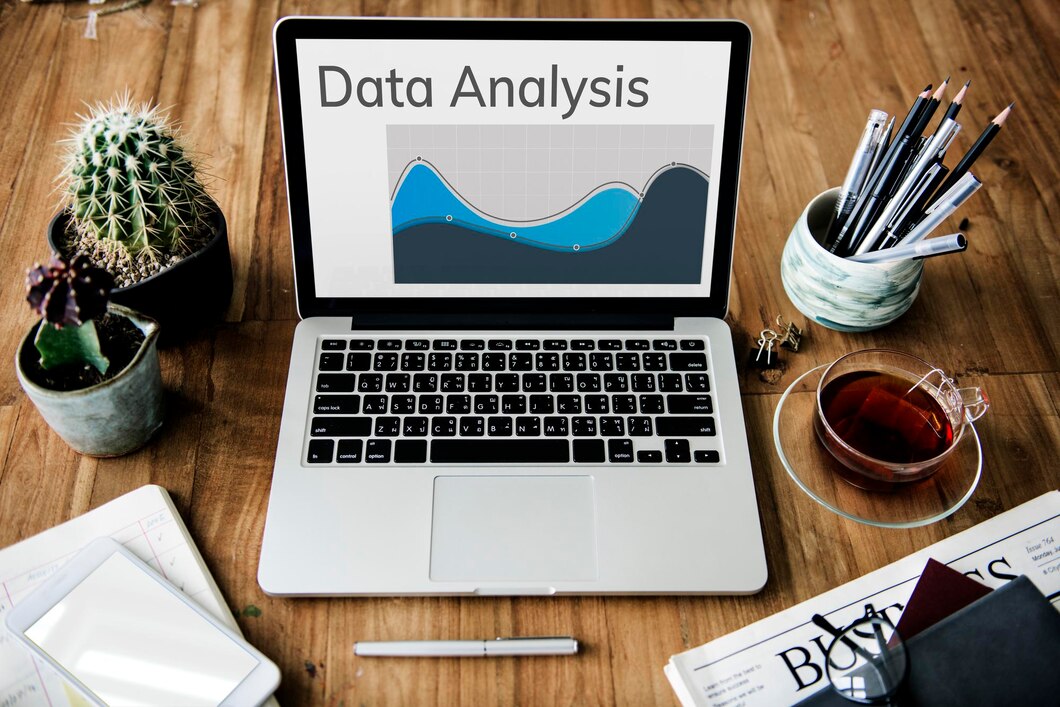Vector Databases: The Key to Lightning-Fast Data Retrieval and Analysis
- 1 Introduction to Vector Databases
- 1.1 Understanding the Data Challenge
- 1.2 The Emergence of Vector Databases
- 1.3 The Need for Speed and Scalability
- 2 How Vector Databases Work
- 2.1 Vectorization: A Fundamental Concept
- 2.2 Data Structures in Vector Databases
- 2.3 The Power of Parallel Processing
- 3 Advantages of Vector Databases
- 3.1 Lightning-Fast Data Retrieval
- 3.2 Real-Time Analytics
- 3.3 Scalability without Bounds
- 3.4 Cost-Efficiency through Optimization
- 4 Applications of Vector Databases
- 4.1 Finance: Where Every Millisecond Counts
- 4.2 Healthcare: Transforming Patient Care
- 4.3 E-commerce: Personalized Shopping Experiences
- 4.4 IoT and Sensor Data: Managing the Data Deluge
- 5 Challenges and Considerations
- 5.1 The Imperative of Data Security
- 5.2 Data Quality: The Foundation of Insights
- 5.3 Integration: Bridging the Old and the New
- 6 Choosing the Right Vector Database
- 7 Future Trends in Vector Databases
In today’s fast-paced digital landscape, data is the new gold, and organizations are constantly looking for innovative ways to store, retrieve, and analyze it efficiently. Traditional databases have served us well for many years, but as the volume and complexity of data continue to grow, they often struggle to keep up. This is where vector databases come into play, offering a cutting-edge solution to meet the demands of modern data-intensive applications. In this article, we will explore the world of vector databases, their advantages, applications, and why they are becoming increasingly crucial in data management and analysis.
Introduction to Vector Databases
Understanding the Data Challenge
In an era where data is likened to oil, organizations of all sizes grapple with the challenges of storing, retrieving, and analyzing massive volumes of information. Although reliable, traditional relational databases often fall short when handling the exponential growth of structured and unstructured data. This limitation has given rise to the need for innovative solutions capable of offering lightning-fast data retrieval and real-time analytics.
The Emergence of Vector Databases
Vector databases have emerged as a groundbreaking solution to the data problem. They introduce a paradigm shift in managing data by leveraging mathematical vectors instead of traditional tabular structures. These vectors, representing data points, can be processed simultaneously, dramatically improving query performance and scalability.
The Need for Speed and Scalability
In a world where milliseconds can make the difference between success and failure, the speed at which data can be retrieved and analyzed is critical. Whether it’s a financial institution processing market data, a healthcare provider making real-time diagnoses, or an e-commerce platform delivering personalized recommendations, speed is paramount. Vector databases offer the rapid data access required to excel in these scenarios.
How Vector Databases Work

Vectorization: A Fundamental Concept
At the core of vector databases lies the concept of vectorization. Instead of representing data as rows and columns, vector databases represent it as mathematical vectors. These vectors can be operated using mathematical functions, enabling parallel data processing and significantly speeding up queries.
Data Structures in Vector Databases
Vector databases employ specialized data structures optimized for the task to facilitate efficient vectorized operations. These structures are designed to handle large volumes of vectorized data with minimal performance degradation, making them ideal for modern data-intensive applications.
The Power of Parallel Processing
One critical advantage of vector databases is their ability to parallelize data processing. Complex analytical queries that would take traditional databases minutes or even hours to complete can be executed with vector databases in seconds. This parallelization is particularly valuable in situations where real-time insights are crucial.
Advantages of Vector Databases
Lightning-Fast Data Retrieval
The primary allure of vector databases is their unparalleled speed in data retrieval. Whether searching through enormous datasets or executing complex analytical queries, vector databases deliver results virtually instantaneously.
Real-Time Analytics
Real-time analytics has become a game-changer for organizations across industries. Vector databases enable businesses to make informed decisions based on up-to-the-minute data, enhancing competitiveness and agility.
Scalability without Bounds
Vector databases are designed with scalability in mind. They can quickly scale horizontally by adding more nodes to the cluster, ensuring your database can grow alongside your organization’s data needs.
Cost-Efficiency through Optimization
Thanks to their exceptional query optimization and storage techniques, vector databases often require less hardware infrastructure than traditional databases to achieve the same level of performance. This efficiency translates into substantial cost savings for businesses.
Applications of Vector Databases
Finance: Where Every Millisecond Counts
In the financial sector, speed and accuracy are paramount. Vector databases empower financial institutions to process vast amounts of market data in real time, enabling traders and analysts to make split-second decisions that can result in significant gains or losses.
Healthcare: Transforming Patient Care
Vector databases have the potential to revolutionize healthcare analytics by providing healthcare providers with instant access to patient records, research data, and medical histories. This leads to faster diagnoses, more efficient treatments, and improved patient care.
E-commerce: Personalized Shopping Experiences
E-commerce platforms leverage vector databases to personalize product recommendations, streamline order processing, and enhance the shopping experience. This personalization leads to higher customer satisfaction and increased sales, benefiting consumers and businesses.
IoT and Sensor Data: Managing the Data Deluge
The Internet of Things (IoT) and the proliferation of sensor data have ushered in an era of unprecedented data generation. Vector databases efficiently handle this influx of data, making them indispensable for industries heavily reliant on IoT, such as manufacturing and logistics.
Challenges and Considerations
The Imperative of Data Security
While vector databases offer exceptional performance, ensuring data security is paramount. Businesses must implement robust security measures to protect sensitive information stored in vector databases and mitigate the risk of data breaches.
Data Quality: The Foundation of Insights
Maintaining data quality and consistency is a significant challenge, especially when dealing with large datasets. Organizations must implement data validation and cleansing processes to address this issue, ensuring that the data used for analysis is accurate and reliable.
Integration: Bridging the Old and the New
Integrating vector databases with existing systems and workflows can be complex. Planning and executing this integration carefully is essential to avoid disruptions and ensure a seamless transition to the new data paradigm.
Choosing the Right Vector Database
Exploring Leading Vector Database Solutions
The market offers a variety of vector database solutions, each with unique features and capabilities. Some popular options include Faiss, Milvus, and NMSLIB. Choosing the right solution depends on your requirements, use cases, and budget.
Factors to Consider in Your Selection
When selecting a vector database, consider scalability, query performance, data security, ease of integration with your existing technology stack, and long-term support. A well-informed decision will maximize your organization’s vector database benefits.
Future Trends in Vector Databases
Synergy with Machine Learning
The integration of machine learning algorithms with vector databases is an exciting trend. This combination opens new avenues for data analysis, predictive modelling, and automation. Organizations that embrace this synergy will be well-positioned to extract deeper insights from their data.
Edge Computing and Real-Time Insights
As edge computing gains prominence, vector databases are expected to play a crucial role in processing data closer to its source. This reduces latency and enables real-time decision-making in edge environments, making it ideal for applications like autonomous vehicles and industrial automation.
The Global Rise of Vector Databases
Adopting vector databases is not limited to a particular region or industry. As more organizations recognize their potential, vector databases are poised for global growth. Businesses across various sectors will increasingly embrace vector databases, from finance to healthcare to logistics, to stay competitive and innovative.
In conclusion, the advent of vector databases marks a pivotal moment in the data management and analysis landscape. These innovative systems, driven by vectorization, offer an unparalleled ability to expedite data retrieval, empower real-time analytics, seamlessly scale to meet evolving needs and optimize operational costs. As organizations strive to harness the full potential of their data in an increasingly competitive world, vector databases emerge as not just a solution but a strategic imperative. They enable businesses to gain a distinct competitive edge, make data-informed decisions with unwavering confidence, and pave the path toward a future where data is not merely a challenge to overcome but a boundless opportunity to explore. Embracing vector databases is not simply an option; it’s a declaration of readiness to flourish in an era where data is king, and those who wield it with finesse will reign supreme.

















